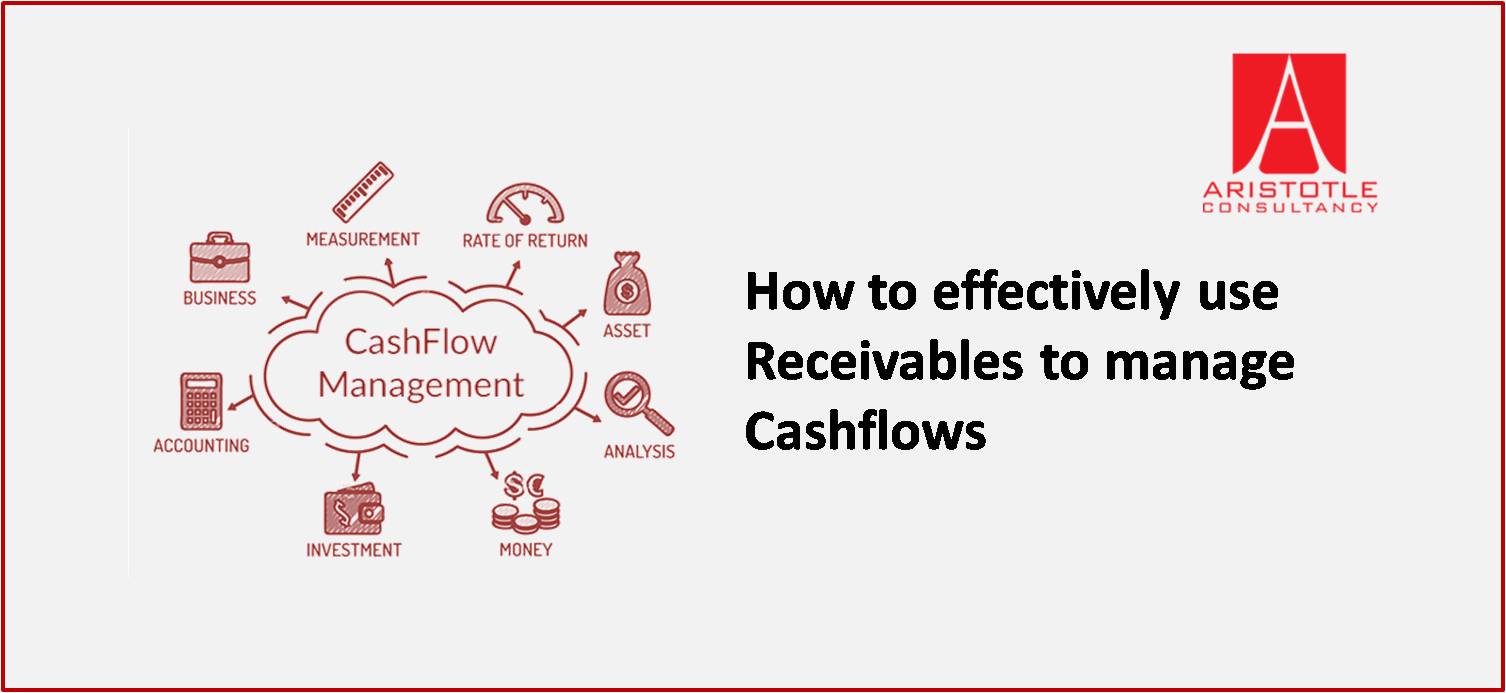Cash flows are the lifeline of the business and are further required to be checked for day-to-day operations. To put it simply, the financial management of a business organization starts and ends with cash flows. If a business organization is running successfully but doesn’t have enough cash in hand for managing its business operations at the end, it might start to experience blockers in its operations, even sooner than expected. Therefore, it is fundamentally necessary to keep a close watch on the cash-flow management of the business i.e. to keep timelines on the payments to be received and the manners in which it would be easier to get positive cash flows or eliminate negative cash flows and ultimately avoid any cash-flow problems at any time.
Receivables generally comprise the money owed to the third parties for any goods or services already provided in the past. Since the money is to be received by the business organization soon, the receivables are a part of the cash flows and are assets for the business. But, practically, businesses do not expect to receive 100% collection from the customers as receivables.
Why is it necessary to keep track of receivables for managing cash flows?
Receivables do directly account for the sums that are owed by any third party in the dealings of the business and thereby, helping them to assess their financial position.
Businesses might have to deal with customers at any point in time, who are unreliable or may default on the payments, resulting in bad debts and sometimes even forcing them to deal with losses despite having effective cash flow management in place.
Therefore, the organization must continuously review the position of its receivables through standards and benchmarks, holding fixed parameters such as outstanding sales, no. of invoices, costs of processing, etc., and standards similar to any other business functioning in the similar industry. Further, there is an immense requirement of effective management of the accounts receivable to understand the actual difference between cash flow positives and cash flow negative position of the enterprise. Similarly, monitoring receivables and analyzing them from time to time, will also help the investors to understand the business closely concerning its financial soundness for investment. It is normal for a business to accept account receivables by the business, it is possible to use certain techniques to mitigate the inherent risks associated with extending credit to third parties. Though every technique would not be equally relevant in the case of each customer or third party, effective and efficient cash flow management of the business is a factor for the success of every business. Provided below are some of the ways by which the businesses could keep the cash flow intact and even improve the collection of receivables in the future-
Assessing Customer Attributes -The first rule towards managing receivables is that before extending any credit to any customer, a business organization must research and verify the creditworthiness and reliability of every customer, especially in the case of large orders.If the customer is an existing one, his past payment records and his current financial position should be assessed by the business.
Accurate & Comprehensive Invoices- Next, whenever a receivable is accepted, the invoice to be issued must be comprehensive in terms of the payment terms and conditions, the inclusive value of taxes, total payment value, etc. Further, businesses must be cautious about the timings to generate invoices so that payments could be received timely.
Technology-Friendly Options for Payments– For accepting payments, businesses should keep more than one mode of payment open for facilitating easier and faster payments from the customer as per his convenience. Accordingly, apart from just allowing bank transfers through cheques, other modes such as net banking or mobile wallet payments, etc. could be accepted by businesses to make payment collections easier
Use of Accounting Software– For simplifying management of receivables and cash flows in the business organization, a lot of accounting soft wares is available that helps the businesses to monitor, review and even send reminders to customers regarding the impending payments. These soft wares may be helpful for multiple purposes such as-
- Generation of Invoices
- Tools to create payment alerts and reminders
- Automated record-keeping for maintenance of accounts receivable records
Maintaining active Communication with the customers-For managing receivables in the organization, the businesses must keep in touch with the parties from whom the payments are due. A lot of accounting software also helps businesses to maintain communications through the generation of automated software at regular intervals.
Encouraging timely payments through offers- Businesses dealing with customers from time-to-time, may offer rewards and special discounts for encouraging timely payments from the customer or any other third party for better receivable management.
Review of the Cashflow management-It is not easy for businesses to overlook the financial management of the organization on a day-to-day basis in the organization and in such circumstances, it is quite easy for the businesses to forgo collection from one or more party/ies. Therefore, the businesses should maintain a spreadsheet of all the pending and received amounts of the receivables and perform timely monitoring and evaluations of the position periodically, for which again accounting software could be advantageous. The software will help to automatically or manually set alarms of the due payments, trigger action on the part of the management, and thus timely action for the collection.
Go for Invoice Discounting-Invoice Discounting or Factoring is the facility where a business organization can obtain funds against their accounts receivables by selling receivables which will not only improve positive cash flows in the organization but also saves time. Due to these benefits, more businesses are opting the same rather than letting their payments tied up in unpaid invoices and eliminate any cash shortages that might come in the future. Further, it will also help a business gain more control over its sales ledger and payment collections.






